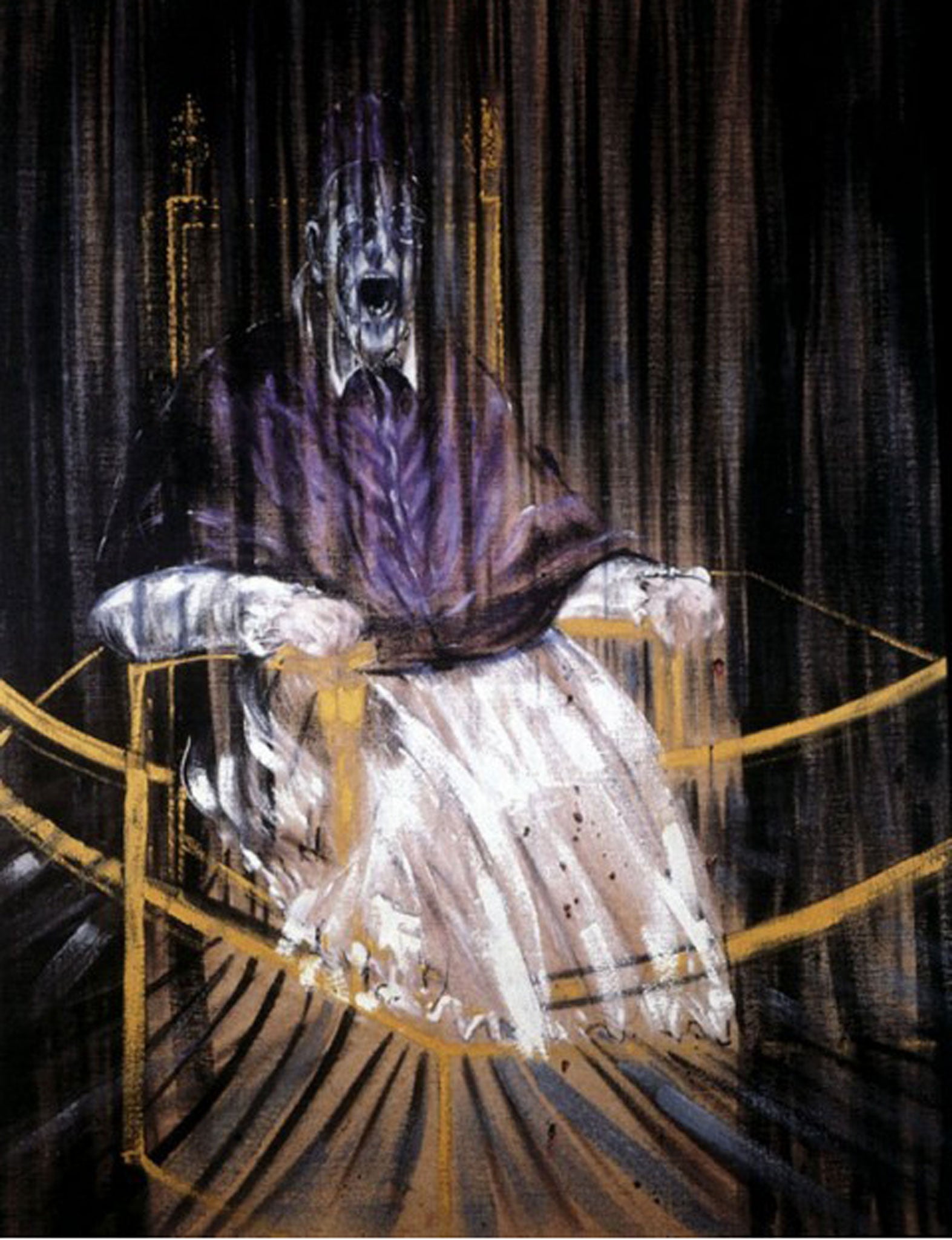Unveiling the Enigma: Francis Bacon’s Haunting Depiction of The Pope – A Masterpiece Explored. Francis Bacon, a titan of modern art, has long fascinated audiences with his evocative and often unsettling portraits. Among his most iconic works are those that depict the Pope, rendered in haunting and surreal ways that challenge traditional perceptions of power and divinity. Through his unique lens, Bacon transforms these historical figures into symbols of postwar anguish and existential questioning.
Bacon's fascination with the papal theme stems from his reinterpretation of Diego Velázquez's renowned Portrait of Pope Innocent X. This series not only showcases his technical prowess but also delves deep into the psychological complexities of human nature. Each stroke on the canvas seems to echo the turmoil of an era marked by war and uncertainty, inviting viewers to confront uncomfortable truths about authority and vulnerability. Let us explore how this enigmatic artist reshaped our understanding of one of history's most enduring symbols.
Who is depicted in this haunting portrait by Francis Bacon? The figure in the chair is the Pope. Bacon chose to paint him swaddled in his ceremonial robes, capturing both the grandeur and isolation inherent in such a position of spiritual leadership. By enveloping the Pope within layers of fabric, Bacon creates an atmosphere of confinement, suggesting the burdensome weight of responsibility carried by those who hold sacred office. This portrayal challenges conventional notions of papal infallibility while emphasizing the humanity beneath the vestments.
The choice to focus on the Pope as a subject matter was not accidental for Bacon. In the 1950s, suited businessmen featured prominently alongside popes, crouching nudes, and death masks of William Blake in his artistic repertoire. These diverse subjects were often painted in series, allowing Bacon to explore recurring themes through multiple iterations. His obsession with the papal theme found its roots in Velázquez's masterpiece, which he reimagined repeatedly throughout his career. Each iteration offered new insights into the interplay between tradition and modernity, faith and doubt.
A new Phaidon Focus book sheds light on the theories behind Francis Bacon's relentless reworking of the papal motif in his paintings inspired by Velázquez. Scholars have speculated that these works reflect personal anxieties as much as they do broader societal concerns. For instance, some interpret the screaming visage of the Pope as emblematic of existential despair following World War II. Others see it as commentary on the erosion of religious authority amidst rapid secularization. Regardless of interpretation, there is no denying the profound impact these images continue to exert over contemporary audiences.
Enclosures and Isolation in Francis Bacon's Art
A clear box appears to surround the pope; such pictorial enclosures were a device Bacon adopted in 1949 and would reappear frequently in his subsequent works. This framing technique serves multiple purposes, enhancing the sense of claustrophobia while drawing attention to the central figure. It acts as both barrier and spotlight, isolating the subject yet compelling viewer engagement. Through these enclosures, Bacon crafts narratives where intimacy coexists with alienation.
This stylistic choice underscores Bacon's preoccupation with containment and release. The boxed environment can be seen as metaphorical representation of internal conflicts—whether psychological or existential—that define human experience. Moreover, it highlights the tension between public persona and private self, particularly relevant when depicting figures like the Pope whose roles demand constant vigilance against exposure of inner frailties.
On the occasion of a recent Francis Bacon exhibition, three fascinating facts emerged regarding one of his most recognized pieces. Firstly, the use of geometric forms around the pope symbolizes rationality juxtaposed against emotional chaos. Secondly, Bacon's decision to distort facial features aimed at expressing raw emotion rather than physical likeness. Lastly, his adoption of Velázquez's composition allowed him to dialogue directly with art history, elevating his work beyond mere replication.
Exploring Francis Bacon's Legacy Through Papal Portraits
Head VI, owned by the Arts Council, stands as precursor to what became known as Bacon's popes—a reinterpretation of Velázquez's portrait of Pope Innocent X. Created in 1949, this oil-on-canvas piece measures 93 x 76 cm and resides at the Museum of Modern Art in Scotland. Its significance lies not only in its aesthetic innovation but also in setting stage for future explorations into thematic territory dominated by ecclesiastical imagery.
In August 2005, a special pilgrimage took place to Edinburgh to witness an exhibition featuring numerous portraits and heads previously encountered only in reproductions. Among them stood several outstanding examples highlighting evolution of Bacon's style across decades. Visitors marveled at first room filled with powerful canvases demonstrating mastery over color palette and composition alike.
Gagosian Shop published Francis Bacon: The First Pope to accompany their London exhibition. This publication provides valuable context surrounding initial creation of these seminal works. By examining early sketches alongside finished products, readers gain deeper appreciation for creative process driving development of complex iconography central to Bacon's oeuvre.
Velázquez Reimagined: Study After Velázquez's Portrait Of Pope Innocent X
Study after Velázquez's Portrait of Pope Innocent X, painted in 1953, exemplifies Francis Bacon's ability to transform classical sources into provocative statements about modern condition. Here, the original artwork undergoes radical alteration, becoming distorted reflection of its former self. Yet despite drastic changes, essence remains intact, testifying to enduring relevance of timeless themes explored through fresh perspective.
Bacon's adaptation challenges viewers to reconsider relationship between past masters and contemporary practitioners. Rather than merely paying homage, he engages critically with source material, pushing boundaries set forth by predecessors. Resultant hybrid proves simultaneously familiar yet alien, forcing confrontation with disquieting aspects of human existence.
Wikipedia entry detailing Study after Velázquez's Portrait of Pope Innocent X offers comprehensive overview including background information, critical reception, and analysis. Such resources prove invaluable tools for scholars seeking greater understanding of influential artworks shaping trajectory of twentieth-century painting. They remind us that even centuries-old traditions remain fertile ground for reinvention under right circumstances.

